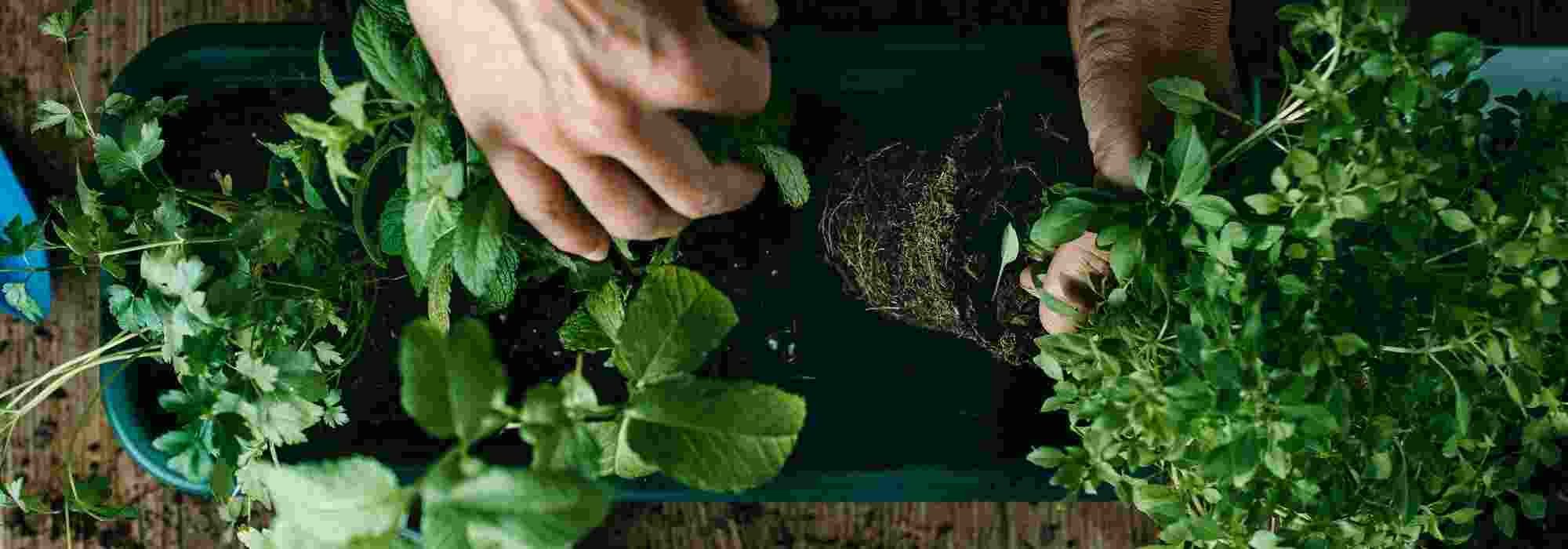
Perennial aromatic plants: long-lasting fragrances and flavours
Tips for Choosing and Growing Aromatic Plants
Contents
What would a garden be without aromatic plants? With their intoxicating scents, unique flavours, health benefits or repellent properties, aromatic plants are invaluable to gardeners. Especially since they are often relatively easy to grow, undemanding and adaptable to all situations. Indeed, they can be grown anywhere – in open ground, but also in pots on a windowsill, balcony or terrace, in a courtyard or patio. Unfortunately, among these aromatic plants, many are annuals and disappear at the slightest frost. Conversely, when well chosen, perennial aromatic plants have the advantage of returning year after year.
Discover our list of must-plant everlasting aromatic plants, as well as our tips for growing, maintaining and best inserting them into your environment.
What exactly is a perennial aromatic plant?
How to define an aromatic plant? It is a herbaceous plant that contains natural compounds, essential oils, which are sources of characteristic scents, aromas and flavours. These volatile compounds such as terpenes, phenols and aldehydes are produced in specialised cells (glands, trichomes) and play an ecological role, particularly in attracting pollinators or repelling certain herbivores, insects or pathogenous agents.
These plants belong to various botanical families, especially the Lamiaceae (thyme, mint, basil), Apiaceae (parsley, coriander, dill) and Asteraceae (tarragon). They are used in cooking, pharmacy (phytotherapy) and perfumery, thanks to their organoleptic and organic active properties.
Their method of use (fresh, dried, distilled) depends on the species and its life cycle. The same goes for their classification, as there are annual, biennial or perennial aromatic plants. Perennials have the advantage of returning year after year, without needing to be replanted. A hardy aromatic perennial withstands seasonal changes and resumes growth in spring, after a more or less pronounced winter dormancy. It therefore requires little maintenance.
Growing hardy perennial aromatic plants thus offers many benefits. Firstly, economic, as you invest once and they remain in place for several seasons, even decades, like rosemary or thyme. But they also provide advantages in terms of organic pest control, such as against mosquitoes. They are also an asset for biodiversity, as aromatic plants are unmatched for attracting pollinating insects. Finally, most of these hardy perennials are highly drought-resistant and hardy.
Read also
7 essential aromatic plantsWhat is the list of perennial aromatic plants to have at home?
It’s difficult to compile a definitive list of perennial aromatic plants as there are so many! Moreover, the choice of which plant to grow depends on individual tastes and needs. That said, beyond the absolute essentials like mint, rosemary and thyme, I’ve chosen to highlight around ten perhaps less well-known but highly interesting aromatic plants.
Lemon Balm (Melissa officinalis)
Lemon balm is a bushy plant that can reach 60-90cm in height, with crinkled, quilted leaves and a strong lemon fragrance. In summer, insignificant creamy-white flower spikes appear, though they do attract pollinating insects like bees. The foliage dies back in winter but regrows in spring. In ideal growing conditions, lemon balm can become invasive. It is hardy down to -15°C.
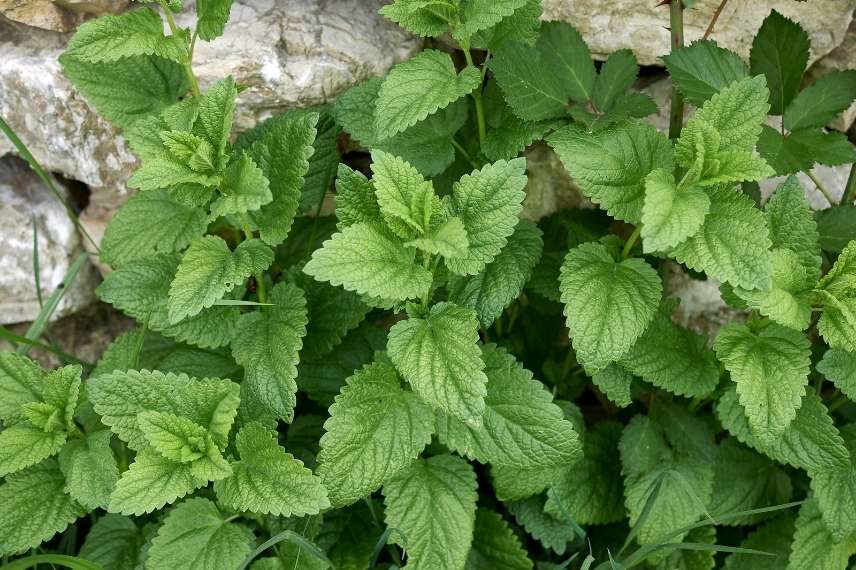
Lemon balm
Planting: Rich, moist, well-mulched soil. Sun or partial shade.
Essential care: Water during heatwaves or drought. Prune in spring to encourage new summer growth. Remove flowers before they set seed if the plant becomes invasive. Cut back foliage to ground level in autumn.
Harvest and uses: Pick leaves as needed, though they are most tender and flavoursome in spring. Use fresh or dried in salads, stuffings, sauces, and to flavour summer drinks. Also used in herbal teas.
Common Chives (Allium schoenoprasum)
Common chives, slightly different from Chinese chives (Allium tuberosum), is a perennial herb that forms clumps from small bulbs. Its long, hollow, tubular leaves taper to a point and have a mild onion flavour. In summer, flower stems emerge, bearing spherical heads of small pink or pale violet flowers. Hardy to -15°C.
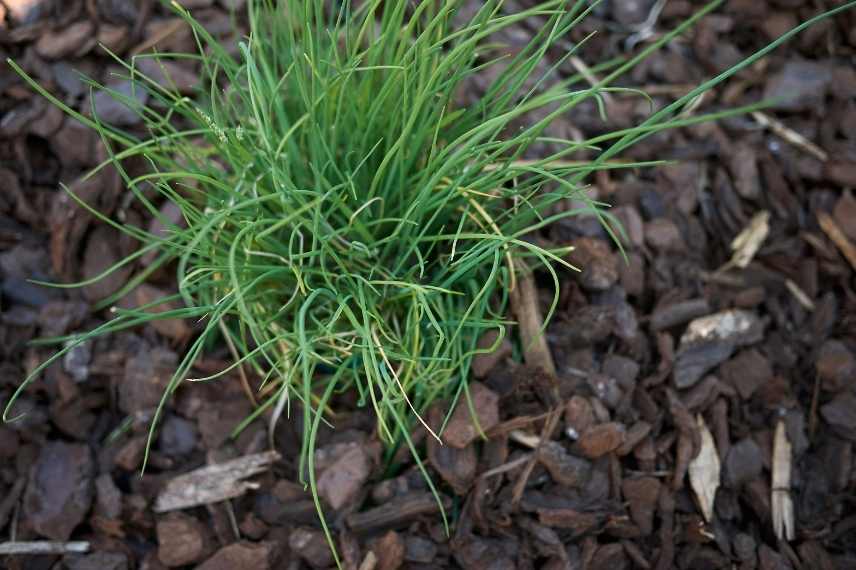
Chives
Planting: Prefers rich, moist, well-drained soil but adapts to most conditions. Likes sunny spots.
Essential care: Water well in summer.
Harvest and uses: Pick leaves as needed, cutting 5cm above the ground to prevent toughness. Use to season soups, cooked dishes, salads, herb butters and vegetable garnishes. Flowers are also edible.
Tarragon (Artemisia dracunculus)
Tarragon is a semi-hardy perennial with spreading rootstocks (hardy to -5 to -10°C), producing upright stems 60-90cm tall. Its olive-green leaves have an aniseed flavour. The clump dies back in winter but regrows in spring. Produces white or greenish flowers in late summer. As it exhausts quickly, replant every 2-3 years.
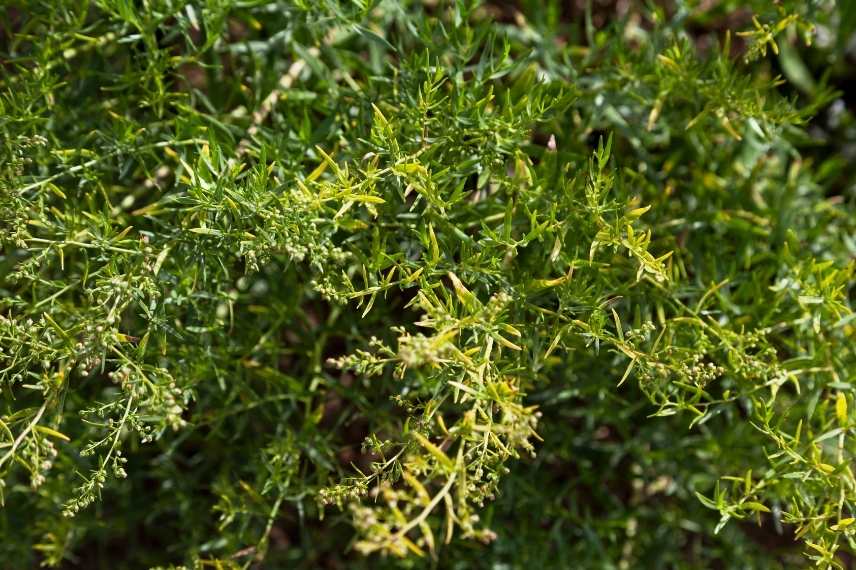
Tarragon
Planting: Needs a warm, sunny spot. Requires sandy, well-drained soil to prevent root rot in winter. Add compost when planting.
Essential care: Water regularly in summer to keep soil moist. Remove flower stems. Cut back clump in autumn and mulch the base in winter.
Harvest and uses: Pick leaves from May to September. Drying diminishes flavour. A classic ‘fine herb’, it enhances fish, meat, dairy, salads, vegetables, soups and creamy sauces.
Sweet Marjoram (Origanum majorana)
Sweet marjoram is a bushy aromatic plant, hardy only to -5°C, so needs winter protection in cold regions. Reaching 25-30cm, it has small oval leaves covered in fine hairs, light green above and grey-green beneath. Produces small white or mauve umbel flowers in summer. Flower buds resemble tiny shells. Its flavour is similar to oregano.
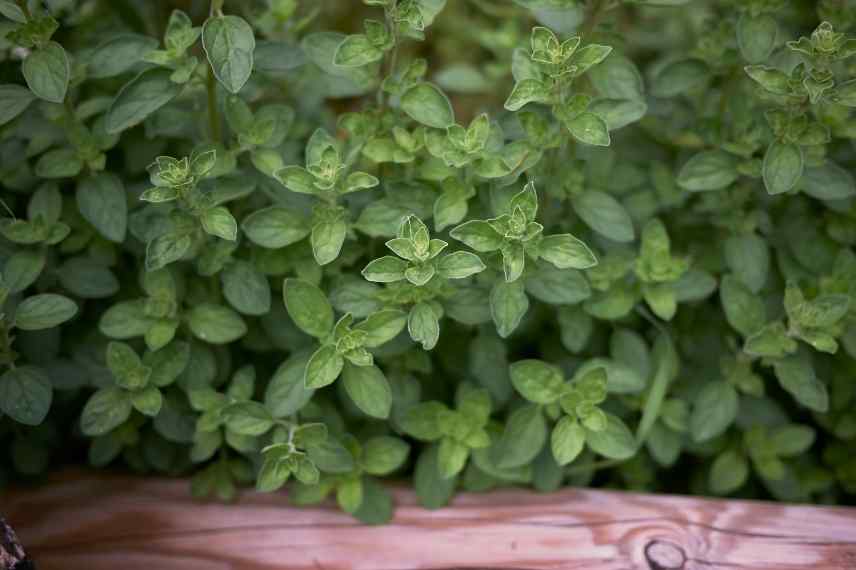
Sweet marjoram
Planting: Prefers rich, well-drained, preferably chalky soil. Add compost when planting. Likes sheltered, sunny spots.
Essential care: Water moderately. Prune flowers at ‘shell’ stage to maintain bushiness. Cut back after flowering.
Harvest and uses: Pick fresh leaves May-September. Can be dried, as can flower buds. Used in bouquet garni, to flavour salads, stuffings and marinades. Dried leaves make herbal tea.
Common Sorrel (Rumex)
Sorrel is a spreading perennial that can be slightly invasive. Its rounded to heart-shaped leaves have a lemony taste. Related to spinach, it contains oxalic acid. Small green flowers appear on long stems in summer. Hardy to -15°C.
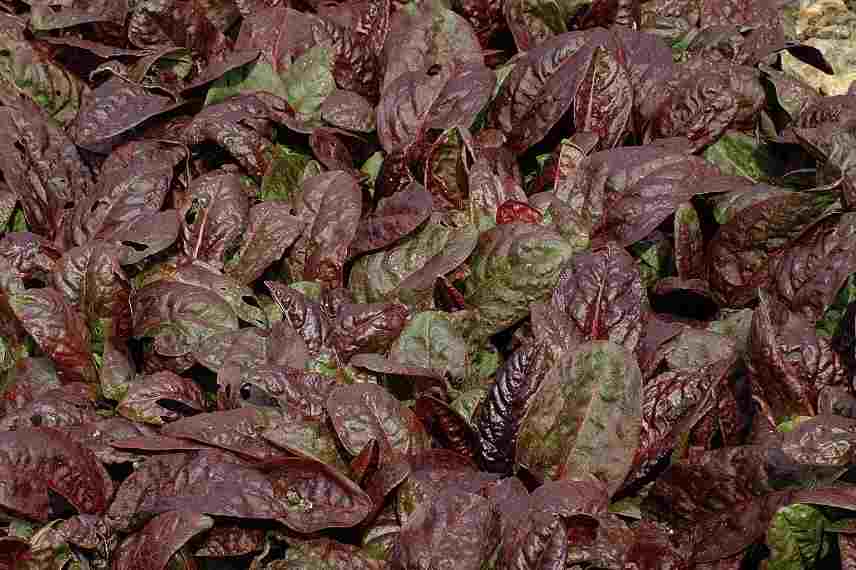
Purple sorrel
Planting: Sun or partial shade, in light, slightly acidic soil.
Essential care: Water regularly to prevent wilting. Pinch out flower stems as they appear.
Harvest and uses: Pick leaves April-October from the outer edges. Use only in salads or soups.
Salad Burnet (Sanguisorba minor)
Salad burnet is a bushy perennial 20-60cm tall, with toothed, rounded grey-green to purple leaves that smell and taste of cucumber. Stems arch outward. In summer, flower spikes bear small round heads of green flowers turning red.
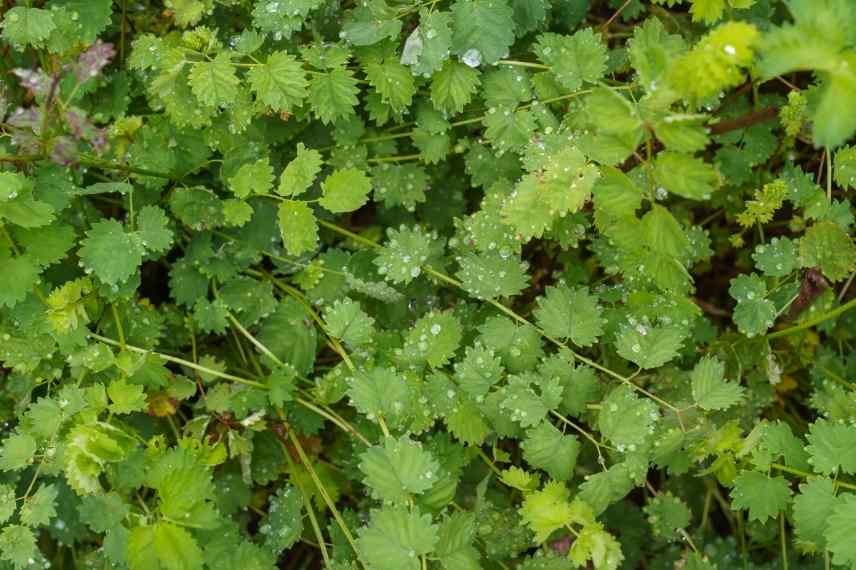
Salad burnet
Planting: Likes open, sunny spots and well-drained soil. Adapts to most soils.
Essential care: Water generously in heat. Remove flowers to encourage leaf growth.
Harvest and uses: Use fresh leaves in salads, with vegetables, or as soup/sauce garnish. Also makes a refreshing tea.
Lovage (Levisticum officinale)
Lovage is a tall plant sometimes reaching 2m. Also called mountain celery or perennial celery, it has dark green to yellow leaves divided into deeply cut leaflets. Greenish summer flowers are followed by light brown aromatic seeds. Hollow stems resemble celery. Dies back in winter but regrows.
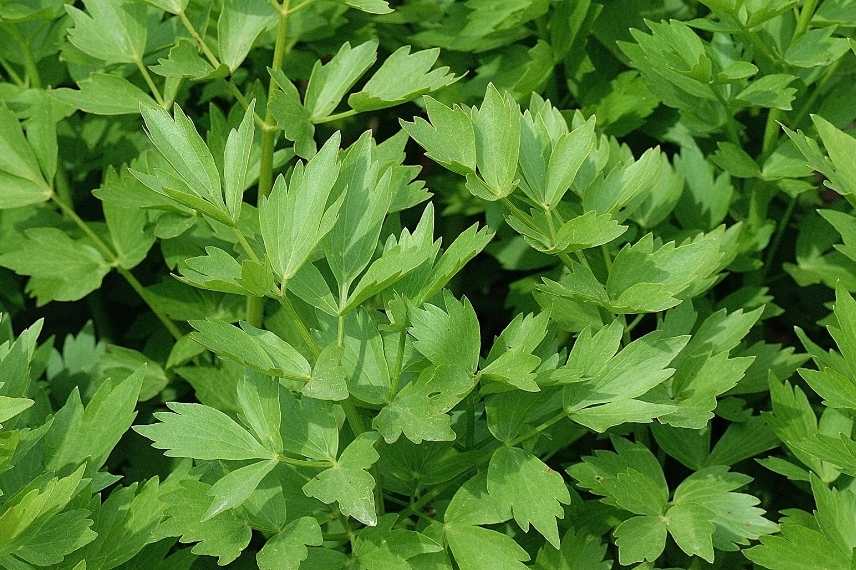
Lovage
Planting: Prefers sun or partial shade, and fresh, fertile, well-drained alkaline soil.
Essential care: Water well, especially in heat. Prune flowers in summer for bushier growth.
Harvest and uses: Pick leaves May-October (they turn bitter after flowering). Harvest seed heads when brown. Leaves season salads; seeds flavour soups, stews, sauces, marinades, even baking.
Sage (Salvia)
Sage is an evergreen undershrub around 75cm tall, with long oval grey-green velvety leaves with a slightly bitter camphor flavour. Flowers form colourful spikes depending on variety. Replace every 4 years as it becomes woody. Hardy from -5 to -15°C depending on species.
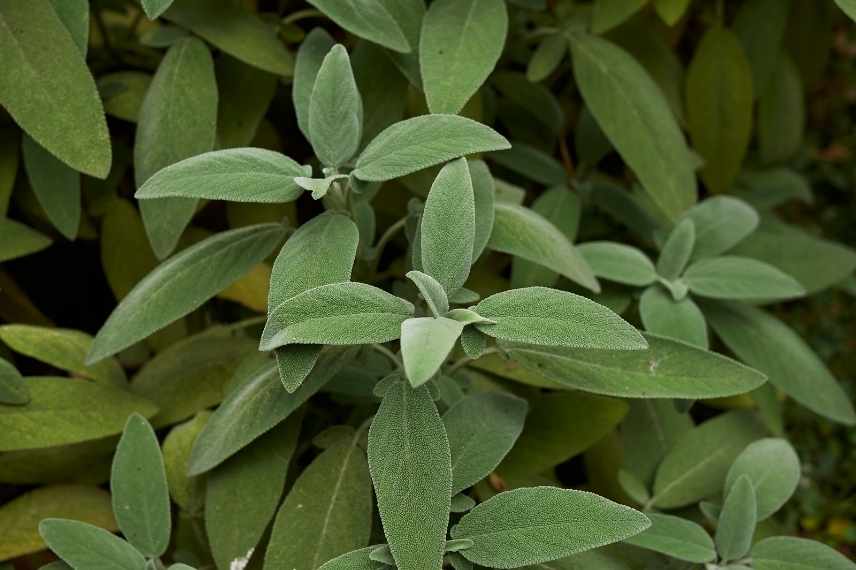
Sage
Planting: Likes sunny, sheltered, well-drained spots. Soil should be rich and non-clay.
Essential care: Water deeply once weekly in dry spells. Prune in spring for dense growth. Deadhead to prevent seeding.
Harvest and uses: Pick leaves and flowers March-October. Use fresh or dried to flavour meats, stuffings, marinades. Edible flowers garnish salads. Also used medicinally.
Feverfew (Tanacetum parthenium)
Feverfew is a short-lived perennial that self-seeds freely. It has finely divided aromatic leaves and small, long-lasting daisy-like flowers. Hardy to -15°C.
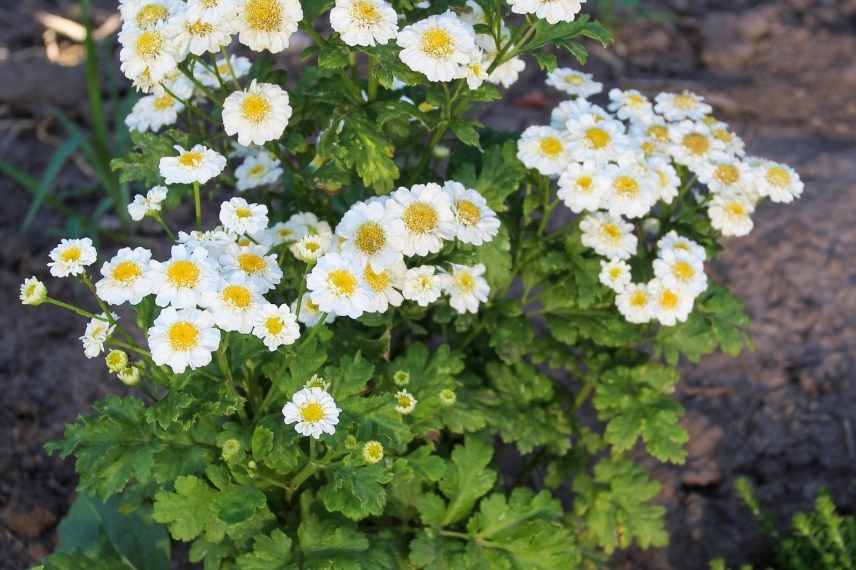
Feverfew
Planting: Prefers full sun and well-drained soil. Ordinary garden soil suffices.
Essential care: Water sparingly; mulch in spring. Cut back after flowering.
Harvest and uses: Pick fresh leaves before flowering; harvest flowers as they open. Use in teas or cosmetics.
Anise Hyssop (Agastache foeniculum)
Anise hyssop is a perennial akin to mint but with a more compact 60-90cm clump. Its mid-green leaves release an aniseed scent. Long spikes of violet, highly melliferous flowers bloom from midsummer. Hardy to -5 to -10°C. Propagate every 3 years.
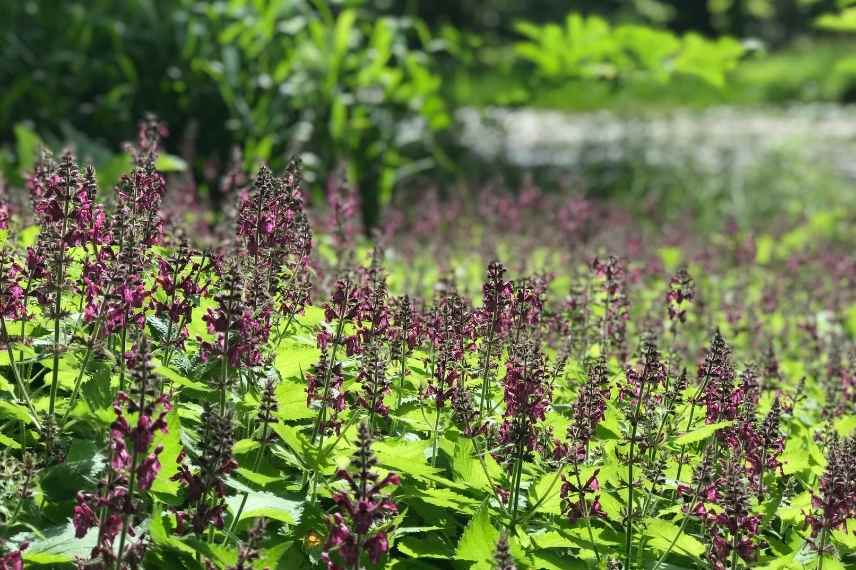
Anise hyssop
Planting: Likes sun and shelter from cold winds. Needs rich, moisture-retentive soil.
Essential care: Water well in summer; mulch. Cut back old stems and flower heads in autumn.
Harvest and uses: Pick young shoots before flowering; harvest flowers as buds open. Use leaves in teas, fruit salads or raw dishes; flowers in salads.
How to incorporate these perennial aromatic plants into your garden?
Traditionally, aromatic plants were grown in a separate dedicated plot. If you have some space, you can recreate this type of small, well-structured scented garden, composed of flower beds and pathways, around a statue or a pond. They can also be grown in a mosaic or a spiral. Don’t hesitate to play with colours and textures, or even contrasts between the grey foliage of sage and the bright green leaves of lemon balm.
That said, you can also:
- Plant a few aromatic plants at the front of perennial borders to enhance the colours of the flowering with their foliage.
- Place these aromatic plants along pathways where they’ll release their fragrance as you pass by.
- Position these plants at the base of rose bushes to conceal the thorny branches.
- Plant these perennial aromatic herbs in the empty spaces of the vegetable garden to attract pollinators and deter pests.
- Grow them in pots and planters within easy reach for harvesting at mealtime.
- Subscribe!
- Contents
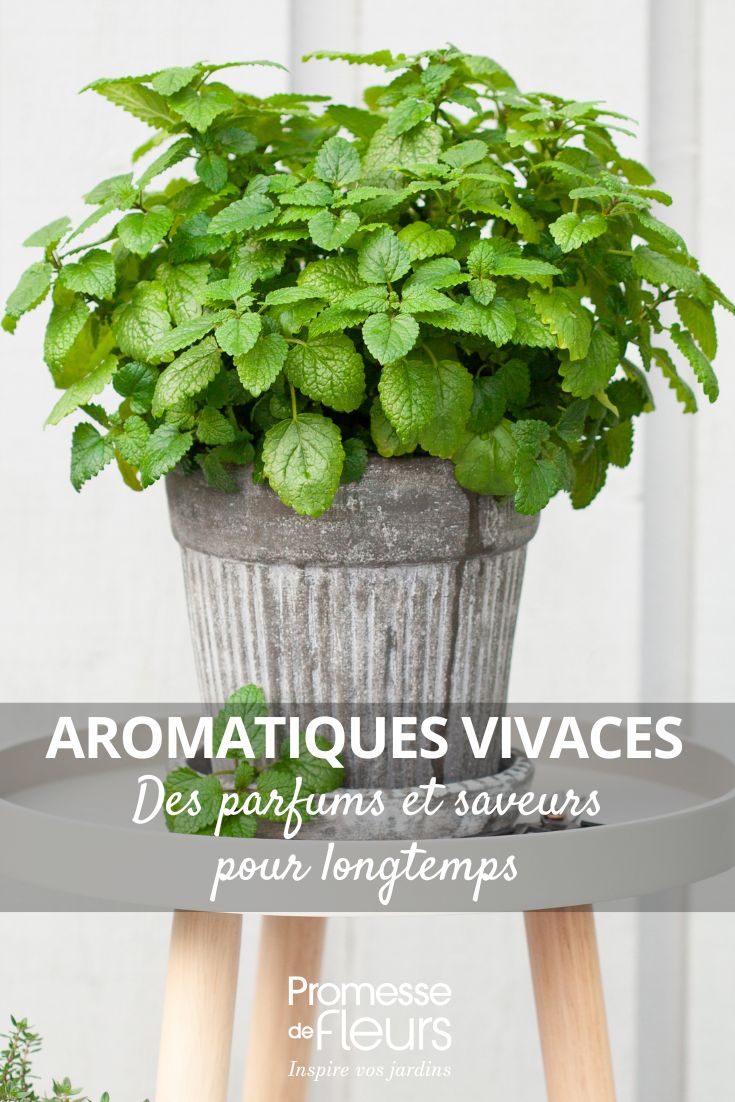































Comments